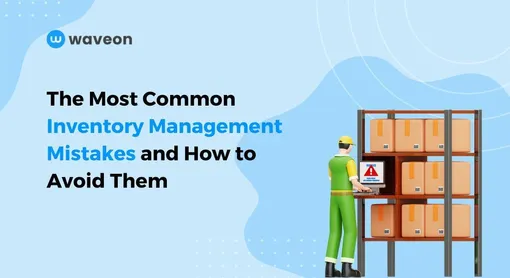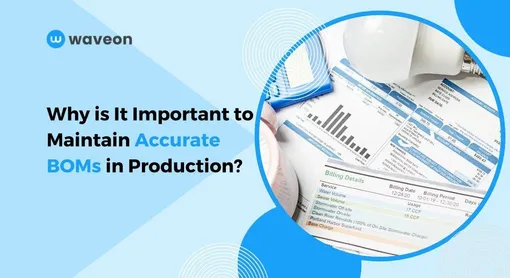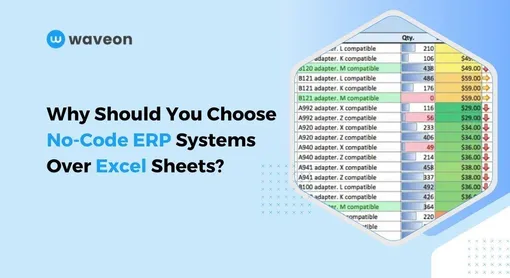Insight
Mastering SEO for B2B : Optimizing Your Website for Organic Search
Waveon Team
6/26/2023
0 min read
TABLE OF CONTENTS

Introduction
In today's digital age, search engine optimization (SEO) has become a vital component of any successful online marketing strategy. While B2C companies have long recognized the power of SEO, B2B businesses are also realizing its immense potential. Optimizing your website for organic search can significantly improve your visibility, drive targeted traffic, and generate valuable leads. In this article, we will explore the essential elements of mastering SEO for B2B and how to effectively optimize your website for organic search.
Keyword Research and Analysis

Keyword research and analysis are crucial steps in optimizing your website for organic search. By identifying the right keywords, you can understand the search intent of your target audience and align your content with their needs. Here is a more detailed elaboration on the process of keyword research and analysis for B2B businesses:
1. Identifying target keywords for B2B audience:
- Start by understanding your B2B audience and their specific needs and pain points. Consider the industry, job titles, and roles of your target customers.
- Brainstorm a list of keywords that are relevant to your business, products, or services. Think about the terms and phrases your audience might use when searching for solutions in your industry.
- Consider long-tail keywords that are more specific and have lower competition. These keywords often have higher conversion potential as they reflect a more refined search intent.
2. Utilizing keyword research tools:
- Take advantage of various keyword research tools available, such as Google Keyword Planner, SEMrush, Moz Keyword Explorer, or Ahrefs Keyword Explorer. These tools provide valuable insights into search volume, competition, and related keywords.
- Use these tools to discover new keyword ideas, explore search trends, and identify high-potential keywords that align with your target audience.
3. Analyzing keyword competitiveness and relevance:
- Evaluate the competitiveness of keywords by examining the search volume and the level of competition. Focus on keywords that have a good balance of search volume and manageable competition.
- Consider the relevance of keywords to your business and target audience. Ensure that the keywords you choose accurately represent the content and offerings on your website.
- Look for keywords that align with different stages of the buyer's journey, from awareness to consideration and decision-making. This allows you to capture potential customers at various stages of the conversion funnel.
4. Consider user intent and long-tail keywords:
- User intent refers to the underlying motive or purpose behind a search query. Understanding user intent helps you provide content that satisfies their needs and improves your chances of ranking higher.
- Differentiate between informational, navigational, and transactional intent. Tailor your keyword strategy accordingly to target the right audience and address their specific intent.
- Long-tail keywords are longer, more specific phrases that often have lower search volume but higher conversion potential. Incorporating long-tail keywords into your content can help you attract highly targeted traffic and improve your chances of ranking for niche queries.
5. Monitor and refine keyword strategy:
Keyword research is not a one-time activity. Continuously monitor your keyword performance and adapt your strategy based on changes in search trends, customer behavior, and industry dynamics.
Regularly review your website analytics and search console data to identify new keyword opportunities and assess the performance of existing keywords. Adjust your keyword targeting based on insights gained from this data.
Effective keyword research and analysis lay the foundation for a successful SEO strategy. By understanding your B2B audience, using keyword research tools, assessing competitiveness and relevance, considering user intent, and monitoring performance, you can optimize your website with the right keywords to attract targeted organic traffic and improve your search engine rankings.
On-Page Optimization

On-page optimization involves optimizing various elements on your website to improve its visibility in search engine results pages (SERPs). By focusing on on-page factors, you can enhance the relevance, structure, and quality of your content, making it more appealing to both search engines and users. Here is a detailed elaboration on the key aspects of on-page optimization for B2B websites:
1. Optimizing meta tags (title tags, meta descriptions):
Title tags: Craft unique and descriptive title tags for each page, incorporating relevant keywords near the beginning. Keep them concise (around 50-60 characters) and compelling to entice users to click through from the SERPs.
Meta descriptions: Write persuasive meta descriptions that accurately summarize the content of the page. Aim for around 150-160 characters, including relevant keywords and a clear call-to-action to encourage users to visit your website.
2. Creating SEO-friendly URLs:
Structure your URLs to be concise, descriptive, and keyword-rich. Avoid lengthy or cryptic URLs that provide little context to search engines or users.
Use hyphens to separate words in URLs, as they are more readable and SEO-friendly compared to underscores or spaces.
Include target keywords naturally in the URL whenever possible.
3. Developing high-quality and relevant content:
Create informative, valuable, and engaging content that meets the needs of your target audience. Focus on addressing their pain points, providing solutions, and showcasing your expertise.
Conduct thorough research to ensure the accuracy and credibility of your content. Support your claims with reliable data and authoritative sources.
Incorporate target keywords naturally within the content, avoiding keyword stuffing. Maintain a good keyword density while prioritizing readability and user experience.
4. Implementing header tags and formatting techniques:
Use header tags (H1, H2, H3, etc.) to structure your content and make it more scannable for both users and search engines.
Include relevant keywords in your headers to provide search engines with a clear understanding of the main topics covered in your content.
Utilize formatting techniques such as bold, italic, and bullet points to highlight important information and improve readability.
5. Enhancing website navigation and user experience:
Ensure intuitive and user-friendly navigation throughout your website. Implement clear menus, breadcrumbs, and internal linking to facilitate easy navigation and accessibility.
Optimize your website's load speed to improve user experience and reduce bounce rates. Compress images, minify code, and leverage caching techniques to enhance performance.
Make your website mobile-responsive, as mobile-friendliness is a crucial ranking factor. Optimize your design and layout to provide a seamless experience across different devices and screen sizes.
By implementing these on-page optimization strategies, you can improve the visibility, relevance, and user experience of your B2B website. Optimized meta tags, SEO-friendly URLs, high-quality content, proper header tags and formatting, and enhanced navigation contribute to better search engine rankings and increased organic traffic. Remember to continually monitor and update your on-page optimization efforts to align with evolving search engine algorithms and user preferences.
Technical SEO for B2B Websites

Technical SEO ensures that search engines can crawl, index, and understand your website effectively. Optimize your website's speed and performance, as slow-loading pages can negatively impact user experience and search rankings. Implement mobile responsiveness and consider adopting Accelerated Mobile Pages (AMP) to provide a seamless browsing experience for mobile users. Structure your website architecture and internal linking strategically to make it easier for search engines to navigate and index your content. Create XML sitemaps and submit them to search engines for improved crawlability. Additionally, optimize your robots.txt and .htaccess files to control search engine access and manage redirects effectively.
Off-Page Optimization and Link Building
Off-page optimization and link building play a crucial role in B2B SEO. Building high-quality backlinks from reputable B2B sources enhances your website's authority and credibility. Explore guest blogging opportunities and content syndication strategies to reach a wider audience and attract inbound links. Additionally, leverage social media platforms to build relationships, promote your content, and acquire relevant backlinks from industry influencers and thought leaders.
Local SEO for B2B Businesses
While B2B businesses often operate on a national or international scale, local SEO should not be overlooked. If your business has a physical presence or targets specific geographical areas, optimizing for local search is essential. Create and optimize your Google My Business profile to ensure accurate and consistent information across various online directories. Encourage customers to leave reviews and ratings, as positive feedback can boost your local search visibility. Implement local schema markup to provide search engines with structured information about your business. Finally, ensure consistency in your NAP (Name, Address, Phone) information across all online platforms.
Measuring and Tracking SEO Performance

To gauge the effectiveness of your SEO efforts, it is crucial to measure and track relevant metrics. Set up Google Analytics and Google Search Console to monitor keyword rankings, organic traffic, and user behavior on your website. Analyze conversion metrics to evaluate the success of your SEO campaigns. Consider conducting A/B testing and experimentation to continually refine your strategies and improve performance.
Set up a robust website analytics tool, such as Google Analytics, to gather valuable data on website traffic, user behavior, and conversions. This tool provides insights into the sources of your organic traffic, top-performing pages, bounce rates, and more.
Analyze the organic search traffic data to understand which keywords and landing pages are driving the most traffic. This information helps you identify high-performing keywords and optimize underperforming pages.
Monitor the rankings of your target keywords on search engine results pages (SERPs). Use SEO tools like SEMrush, Ahrefs, or Moz to track keyword positions over time.
Regularly check your keyword rankings to identify fluctuations and trends. Analyze the impact of your SEO efforts on keyword performance and adjust your strategies accordingly.
SEO Best Practices for B2B
Staying up to date with search engine algorithm changes and industry trends is crucial for sustained SEO success. Conduct regular website audits to identify areas for improvement and implement optimization updates accordingly. Utilize data-driven insights to refine your SEO strategies and adapt to evolving customer needs. Lastly, build a strong online presence through content marketing, leveraging high-quality, informative, and engaging content to establish thought leadership in your industry.
Conclusion
Mastering SEO for B2B is an ongoing process that requires strategic planning, execution, and continuous adaptation. By optimizing your website for organic search, you can enhance your online visibility, attract targeted traffic, and generate valuable leads for your B2B business. By leveraging Waveon's rapid app development capabilities, SEO-friendly app structure, integration with SEO tools, content management features, and scalability, B2B businesses can enhance their online presence, attract targeted traffic, and drive valuable leads, all without the need for extensive coding knowledge or resources. Remember to conduct thorough keyword research, optimize on-page elements, implement technical SEO best practices, leverage off-page optimization and link building, optimize for local search, and track your SEO performance. By following these strategies and staying abreast of industry developments, you can position your B2B website for long-term success in the competitive online landscape.








![Choosing the Right Bill of Materials (BOM) Management Software [5 Tools]](/_ipx/w_510,f_webp/static/img/blog/_posting/1741829511049.jpeg)



